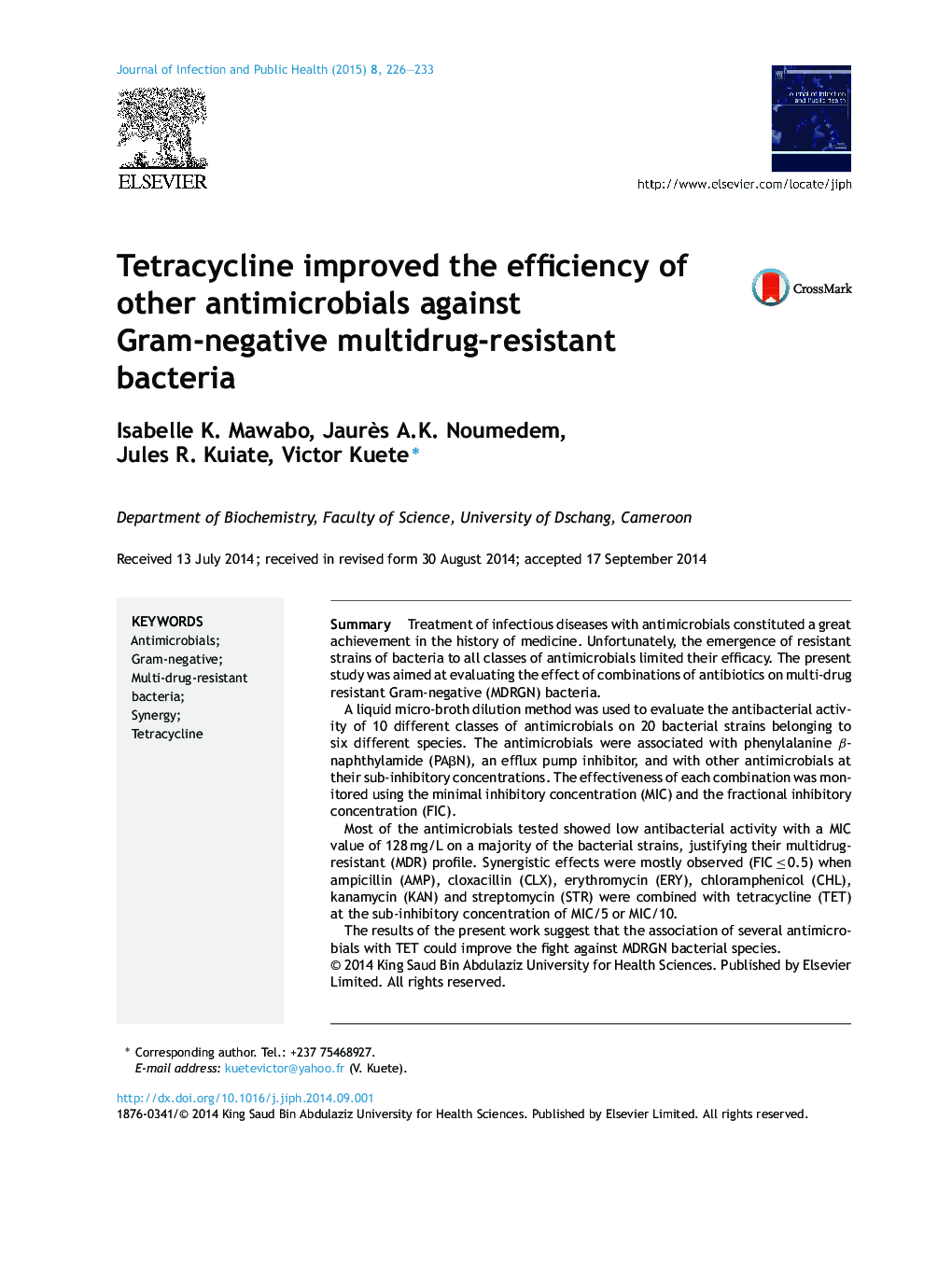| Article ID | Journal | Published Year | Pages | File Type |
|---|---|---|---|---|
| 3405976 | Journal of Infection and Public Health | 2015 | 8 Pages |
SummaryTreatment of infectious diseases with antimicrobials constituted a great achievement in the history of medicine. Unfortunately, the emergence of resistant strains of bacteria to all classes of antimicrobials limited their efficacy. The present study was aimed at evaluating the effect of combinations of antibiotics on multi-drug resistant Gram-negative (MDRGN) bacteria.A liquid micro-broth dilution method was used to evaluate the antibacterial activity of 10 different classes of antimicrobials on 20 bacterial strains belonging to six different species. The antimicrobials were associated with phenylalanine β-naphthylamide (PAβN), an efflux pump inhibitor, and with other antimicrobials at their sub-inhibitory concentrations. The effectiveness of each combination was monitored using the minimal inhibitory concentration (MIC) and the fractional inhibitory concentration (FIC).Most of the antimicrobials tested showed low antibacterial activity with a MIC value of 128 mg/L on a majority of the bacterial strains, justifying their multidrug-resistant (MDR) profile. Synergistic effects were mostly observed (FIC ≤ 0.5) when ampicillin (AMP), cloxacillin (CLX), erythromycin (ERY), chloramphenicol (CHL), kanamycin (KAN) and streptomycin (STR) were combined with tetracycline (TET) at the sub-inhibitory concentration of MIC/5 or MIC/10.The results of the present work suggest that the association of several antimicrobials with TET could improve the fight against MDRGN bacterial species.
